
Animal health company Zoetis (NYSE:ZTS) reported revenue ahead of Wall Street’s expectations in Q2 CY2025, with sales up 4.2% year on year to $2.46 billion. The company expects the full year’s revenue to be around $9.53 billion, close to analysts’ estimates. Its non-GAAP profit of $1.76 per share was 9.2% above analysts’ consensus estimates.
Is now the time to buy Zoetis? Find out by accessing our full research report, it’s free.
Zoetis (ZTS) Q2 CY2025 Highlights:
- Revenue: $2.46 billion vs analyst estimates of $2.41 billion (4.2% year-on-year growth, 1.9% beat)
- Adjusted EPS: $1.76 vs analyst estimates of $1.61 (9.2% beat)
- Adjusted EBITDA: $935 million vs analyst estimates of $1.07 billion (38% margin, 13% miss)
- The company slightly lifted its revenue guidance for the full year to $9.53 billion at the midpoint from $9.5 billion
- Management slightly raised its full-year Adjusted EPS guidance to $6.31 at the midpoint
- Operating Margin: 36.7%, in line with the same quarter last year
- Constant Currency Revenue rose 8% year on year (11% in the same quarter last year)
- Market Capitalization: $67.59 billion
Company Overview
Originally spun off from Pfizer in 2013 as the world's largest pure-play animal health company, Zoetis (NYSE:ZTS) discovers, develops, and sells medicines, vaccines, diagnostic products, and services for pets and livestock animals worldwide.
Revenue Growth
A company’s long-term performance is an indicator of its overall quality. Any business can put up a good quarter or two, but the best consistently grow over the long haul. Luckily, Zoetis’s sales grew at a decent 8.2% compounded annual growth rate over the last five years. Its growth was slightly above the average healthcare company and shows its offerings resonate with customers.
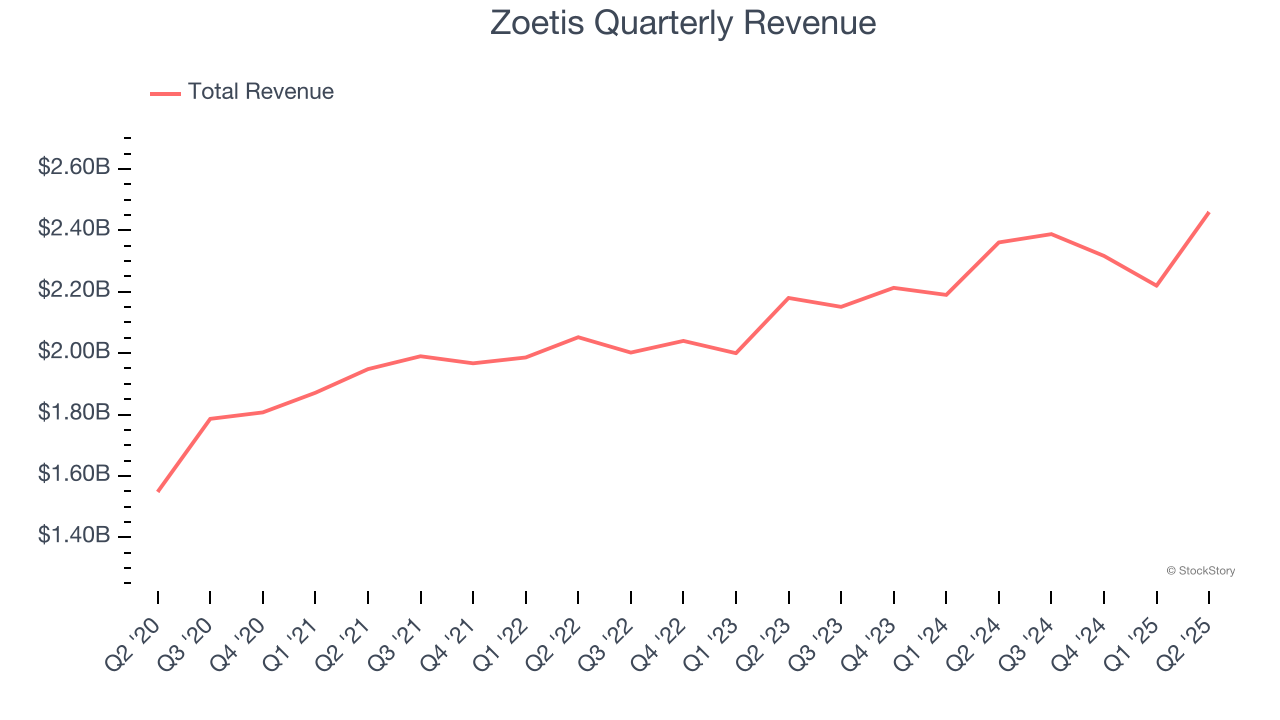
We at StockStory place the most emphasis on long-term growth, but within healthcare, a half-decade historical view may miss recent innovations or disruptive industry trends. Zoetis’s recent performance shows its demand has slowed as its annualized revenue growth of 6.8% over the last two years was below its five-year trend. 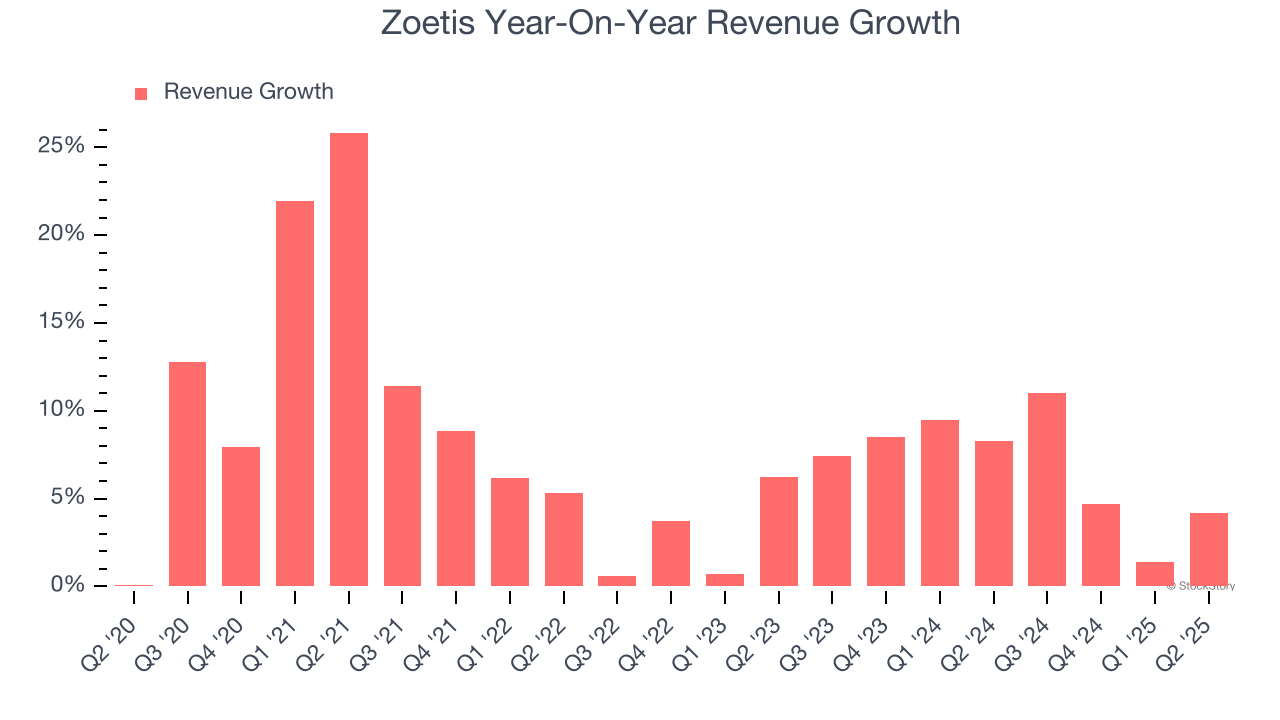
Zoetis also reports sales performance excluding currency movements, which are outside the company’s control and not indicative of demand. Over the last two years, its constant currency sales averaged 9% year-on-year growth. Because this number is better than its normal revenue growth, we can see that foreign exchange rates have been a headwind for Zoetis. 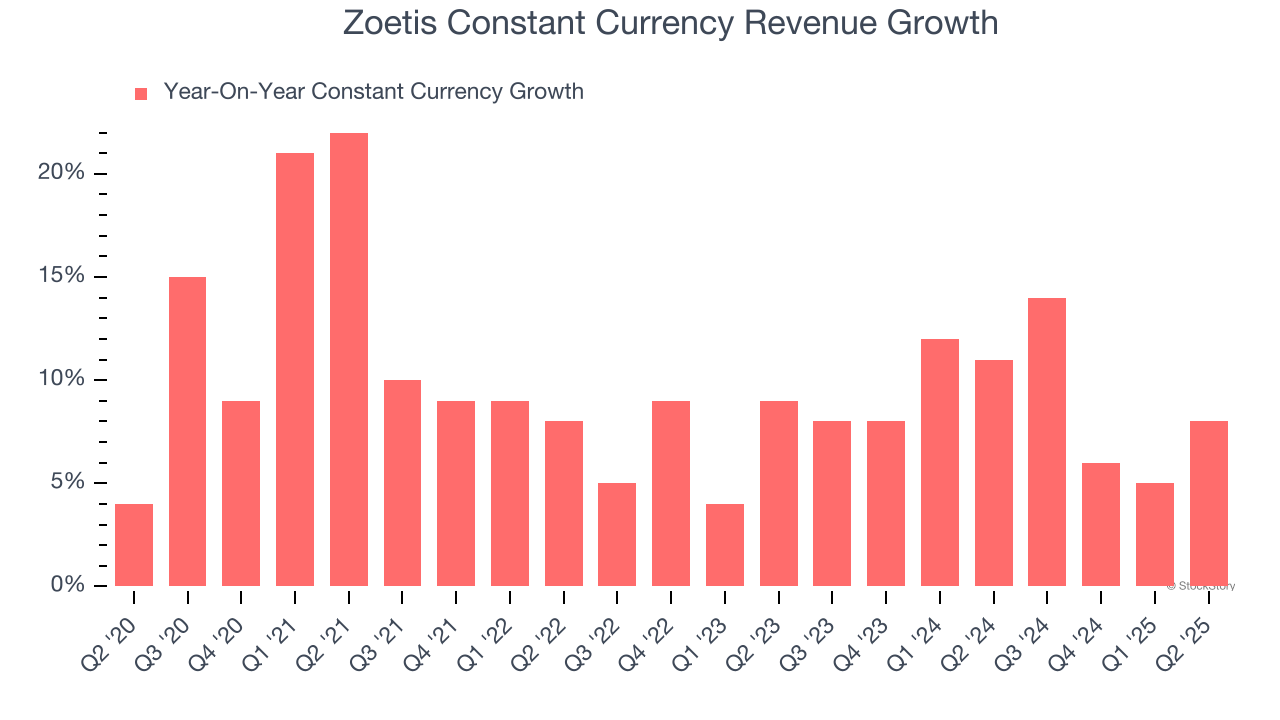
This quarter, Zoetis reported modest year-on-year revenue growth of 4.2% but beat Wall Street’s estimates by 1.9%.
Looking ahead, sell-side analysts expect revenue to grow 4.1% over the next 12 months, a slight deceleration versus the last two years. This projection doesn't excite us and indicates its products and services will see some demand headwinds. At least the company is tracking well in other measures of financial health.
Unless you’ve been living under a rock, it should be obvious by now that generative AI is going to have a huge impact on how large corporations do business. While Nvidia and AMD are trading close to all-time highs, we prefer a lesser-known (but still profitable) stock benefiting from the rise of AI. Click here to access our free report one of our favorites growth stories.
Operating Margin
Zoetis has been a well-oiled machine over the last five years. It demonstrated elite profitability for a healthcare business, boasting an average operating margin of 35.7%.
Analyzing the trend in its profitability, Zoetis’s operating margin rose by 1.2 percentage points over the last five years, as its sales growth gave it operating leverage.

This quarter, Zoetis generated an operating margin profit margin of 36.7%, in line with the same quarter last year. This indicates the company’s overall cost structure has been relatively stable.
Earnings Per Share
We track the long-term change in earnings per share (EPS) for the same reason as long-term revenue growth. Compared to revenue, however, EPS highlights whether a company’s growth is profitable.
Zoetis’s EPS grew at a remarkable 11% compounded annual growth rate over the last five years, higher than its 8.2% annualized revenue growth. This tells us the company became more profitable on a per-share basis as it expanded.
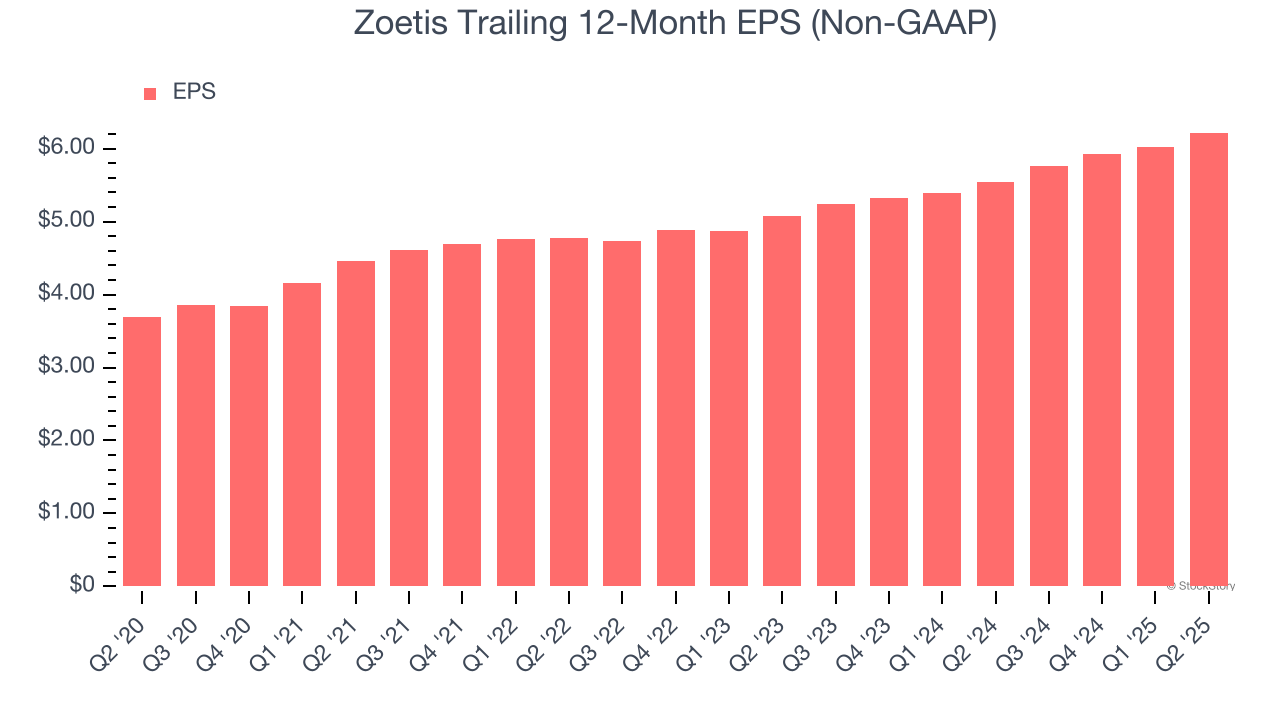
We can take a deeper look into Zoetis’s earnings quality to better understand the drivers of its performance. As we mentioned earlier, Zoetis’s operating margin was flat this quarter but expanded by 1.2 percentage points over the last five years. On top of that, its share count shrank by 6.8%. These are positive signs for shareholders because improving profitability and share buybacks turbocharge EPS growth relative to revenue growth. 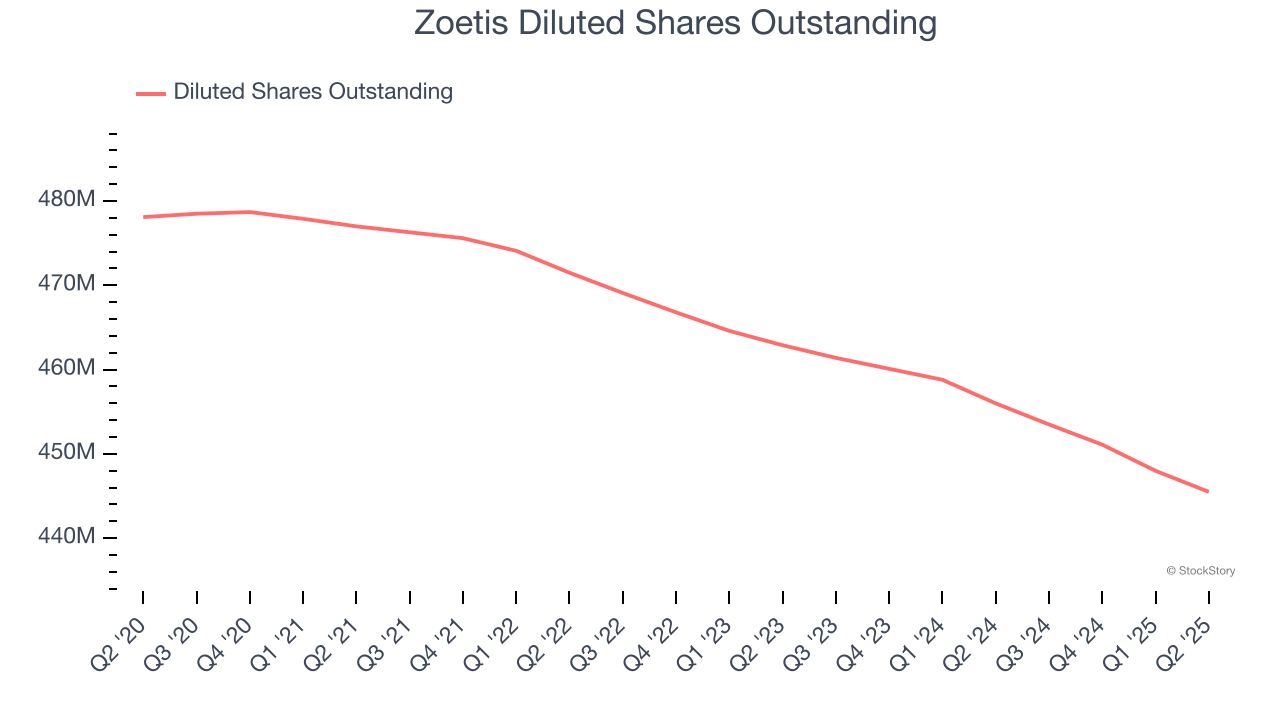
In Q2, Zoetis reported adjusted EPS at $1.76, up from $1.56 in the same quarter last year. This print beat analysts’ estimates by 9.2%. Over the next 12 months, Wall Street expects Zoetis’s full-year EPS of $6.22 to grow 4.1%.
Key Takeaways from Zoetis’s Q2 Results
We were impressed by how significantly Zoetis blew past analysts’ constant currency revenue expectations this quarter. We were also happy its revenue outperformed Wall Street’s estimates. Looking ahead, full-year guidance was raised, which is usually a good sign. Overall, we think this was a strong quarter. The stock traded up 8.6% to $164.99 immediately after reporting.
Sure, Zoetis had a solid quarter, but if we look at the bigger picture, is this stock a buy? We think that the latest quarter is only one piece of the longer-term business quality puzzle. Quality, when combined with valuation, can help determine if the stock is a buy. We cover that in our actionable full research report which you can read here, it’s free.
